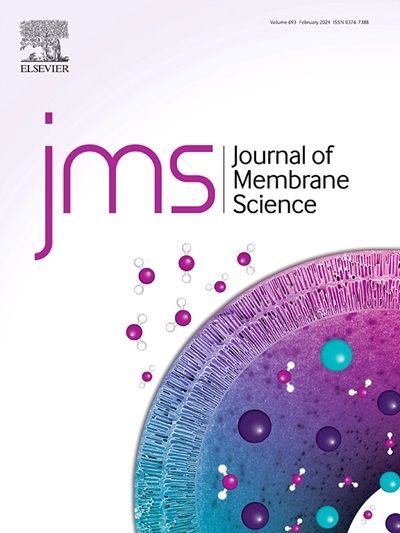Optimizing the hydrogen productivity of an ammonia decomposition membrane reactor through offset positioning of the membrane and catalyst
IF 8.4
1区 工程技术
Q1 ENGINEERING, CHEMICAL
引用次数: 0
Abstract
Optimization of the hydrogen production rate from an ammonia decomposition membrane reactor is performed for both volumetric and membrane area flux metrics at high total hydrogen recovery. The study utilizes an experimentally-verified model incorporating mass, momentum, and heat transfer within a 2D axisymmetric shell-and-tube reactor configuration, enabling the optimization of both operating conditions (temperature, pressure, and feed flow rate), and reactor geometry (radii and lengths). In addition, the relative position of the membrane and catalyst is examined using an offset variable function, zshift, which allows for the catalyst bed to begin before the membrane – an aspect that has not been thoroughly explored in previous studies. Notably, one unexpected finding is that decreasing the ideal selectivity (H2/N2) from 5600 to 40 increases the hydrogen flux productivity by 10 % when the membrane position is optimized. In contrast, the hydrogen flux decreases by 15 % if the membrane position is fixed at the center of the reaction bed. Furthermore, at 80 % hydrogen recovery the optimization of total volumetric hydrogen production favors a centered membrane reactor, whereas optimization of hydrogen flux results in a completely separated reactor and separator. Although at 90 % hydrogen recovery the optimal position is shifted toward a membrane reactor, the results of this study suggest that a membrane reactor may not enhance hydrogen productivity from ammonia decomposition for all conditions. The results of this work should inspire new design considerations for the optimization of catalytic and packed-bed membrane reactors.

求助全文
约1分钟内获得全文
求助全文
来源期刊

Journal of Membrane Science
工程技术-高分子科学
CiteScore
17.10
自引率
17.90%
发文量
1031
审稿时长
2.5 months
期刊介绍:
The Journal of Membrane Science is a publication that focuses on membrane systems and is aimed at academic and industrial chemists, chemical engineers, materials scientists, and membranologists. It publishes original research and reviews on various aspects of membrane transport, membrane formation/structure, fouling, module/process design, and processes/applications. The journal primarily focuses on the structure, function, and performance of non-biological membranes but also includes papers that relate to biological membranes. The Journal of Membrane Science publishes Full Text Papers, State-of-the-Art Reviews, Letters to the Editor, and Perspectives.
 求助内容:
求助内容: 应助结果提醒方式:
应助结果提醒方式:


